Wenn Sie auf dem neuesten Stand sindLinux-Distributionen, müssen Sie bemerkt haben, dass die 32-Bit-Unterstützung eingestellt wurdedie meisten der beliebtesten Linux-Distributionen. Arch Linux, Ubuntu, Fedora, alle haben die Unterstützung für diese ältere Architektur eingestellt.
Aber was ist, wenn Sie Vintage-Hardware dabei haben, die noch aufgearbeitet werden muss, oder Sie diese für etwas nutzen möchten? Keine Sorge, für Ihr 32-Bit-System stehen noch einige Optionen zur Auswahl.
In diesem Artikel habe ich versucht, einige der besten Linux-Distributionen zusammenzustellen, die auch in den nächsten Jahren weiterhin die 32-Bit-Plattform unterstützen.
Top-Linux-Distributionen, die noch 32-Bit-Unterstützung bieten

Diese Liste unterscheidet sich etwas vonunsere frühere Liste von Linux-Distributionen für alte Laptops. Sogar 64-Bit-Computer können als alt gelten, wenn sie vor 2010 veröffentlicht wurden. Aus diesem Grund enthielten einige der dort aufgeführten Vorschläge Distributionen, die derzeit nur 64-Bit unterstützen.
Die hier präsentierten Informationen sind nach meinem Wissen und meinen Erkenntnissen korrekt. Wenn Sie jedoch etwas anderes feststellen, teilen Sie mir dies bitte im Kommentarbereich mit.
Bevor Sie fortfahren: Ich nehme an, Sie wissen esSo überprüfen Sie, ob Sie einen 32-Bit- oder 64-Bit-Computer haben.
1. Debian

Debian ist eine fantastische Wahl für 32-Bit-Systeme, da es in der neuesten stabilen Version immer noch unterstützt wird. Zum Zeitpunkt des Verfassens dieses Artikels die neueste stabile VersionDebian 10 „Buster“bietet eine 32-Bit-Version und wird bis 2024 unterstützt.
Wenn Sie neu bei Debian sind, ist es erwähnenswert, dass Sie eine solide Dokumentation für alles auf Debian erhaltenoffizielles Wiki. Es sollte also kein Problem sein, loszulegen.
Sie können durchstöbernverfügbare Installationsprogrammeum es zu installieren. Bevor Sie jedoch fortfahren, würde ich Ihnen empfehlen, einen Blick auf die Liste zu werfenDinge, die Sie vor der Installation von Debian beachten solltenzusätzlich zu seinerInstallationsanleitung.
Minimale Systemvoraussetzungen:
- 512 MB RAM
- 10 GB Speicherplatz
- 1-GHz-Prozessor (Pentium 4 oder gleichwertig)
2. Slax
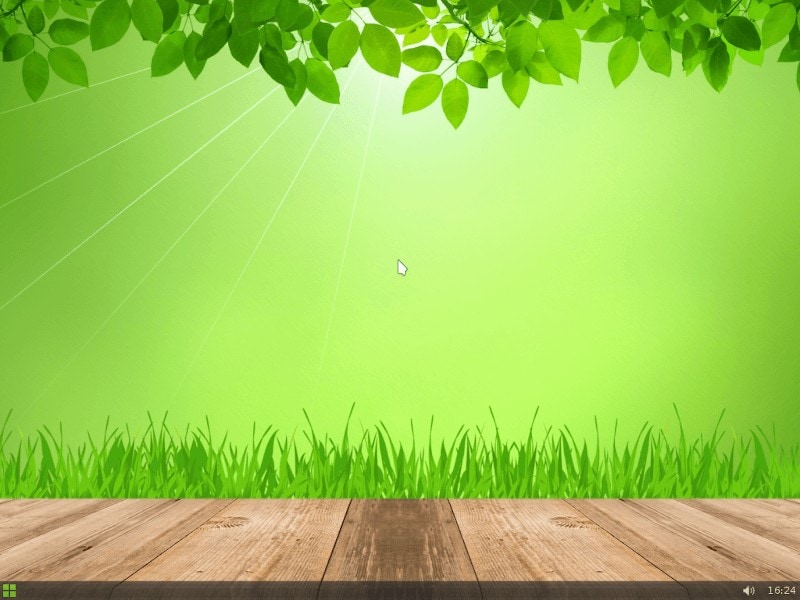
Wenn Sie ein Gerät nur für vorübergehende Arbeiten schnell hochfahren möchten, ist Slax eine beeindruckende Option.
Es basiert auf Debian, soll aber eine portable und schnelle Option sein, die über USB-Geräte oder DVDs ausgeführt werden kann. Sie können die 32-Bit-ISO-Datei kostenlos von der Website herunterladen oder eine wiederbeschreibbare DVD/einen verschlüsselten USB-Stick mit vorinstalliertem Slax erwerben.
Natürlich ist dies nicht dazu gedacht, ein herkömmliches Desktop-Betriebssystem zu ersetzen. Aber ja, Sie erhalten die 32-Bit-Unterstützung mit Debian als Basis.
Minimale Systemvoraussetzungen:
- RAM: 128 MB (Offline-Nutzung) / 512 MB (für Webbrowser-Nutzung)
- CPU: i686 oder neuer
3. AntiX

Noch eine beeindruckende Debian-basierte Distribution. AntiX ist im Volksmund als systemd-freie Distribution bekannt, die sich auf Leistung konzentriert und gleichzeitig eine schlanke Installation darstellt.
Es ist perfekt für nahezu jedes alte 32-Bit-System geeignet. Um Ihnen eine Vorstellung zu geben: Es benötigt mindestens 256 MB RAM und 2,7 GB Speicherplatz. Es ist nicht nur einfach zu installieren, sondern das Benutzererlebnis richtet sich sowohl an Neulinge als auch an erfahrene Benutzer.
Sie sollten die neueste Version basierend auf Debians neuestem verfügbaren stabilen Zweig erhalten.
Minimale Systemvoraussetzungen:
- RAM: 256 MB RAM
- CPU: PIII-Systeme
- Festplattenspeicher: 5 GB Festplattenspeicher
4. openSUSE

openSUSE ist eine unabhängige Linux-Distribution, die auch 32-Bit-Systeme unterstützt. Auch wenn die neueste reguläre Version (Leap) keine 32-Bit-Bilder bietet, stellt die Rolling Release Edition (Tumbleweed) 32-Bit-Bilder bereit.
Wenn Sie neu sind, wird es eine völlig andere Erfahrung sein. Ich empfehle Ihnen jedoch, die durchzugehenGründe, warum Sie openSUSE verwenden sollten.
Es richtet sich hauptsächlich an Entwickler und Systemadministratoren, Sie können es aber auch als durchschnittlicher Desktop-Benutzer verwenden. Es ist erwähnenswert, dass openSUSE nicht für die Ausführung auf Vintage-Hardware gedacht ist. Sie müssen daher sicherstellen, dass Sie über mindestens 2 GB RAM, mehr als 40 GB Speicherplatz und einen Dual-Core-Prozessor verfügen.
Minimale Systemvoraussetzungen:
- Pentium 4 1,6 GHz oder höherer Prozessor
- 1 GB physischer RAM
- 5 GB Festplatte
5. Emmabuntüs
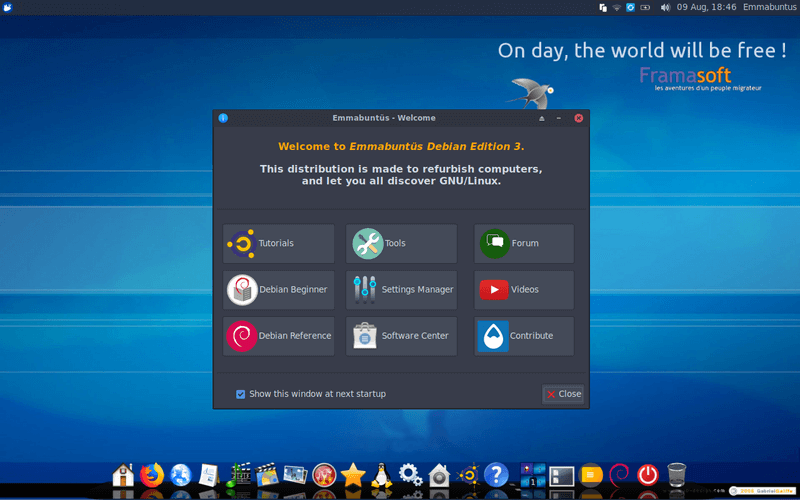
Emmabuntus ist eine interessante Distribution, die darauf abzielt, die Lebensdauer der Hardware zu verlängern, um die Verschwendung von Rohstoffen durch 32-Bit-Unterstützung zu reduzieren. Als Gruppe sind sie auch an der Bereitstellung von Computern und digitalen Technologien für Schulen beteiligt.
Es bietet zwei verschiedene Editionen, eine auf Ubuntu-Basis und die andere auf Debian-Basis. Wenn Sie eine längere 32-Bit-Unterstützung wünschen, sollten Sie sich möglicherweise für die Debian-Edition entscheiden. Es ist vielleicht nicht die beste Option, aber mit einer Reihe vorkonfigurierter Software, die das Linux-Lernerlebnis erleichtert, und der 32-Bit-Unterstützung ist es eine gute Option, wenn Sie ihr Anliegen dabei unterstützen möchten.
Minimale Systemvoraussetzungen:
- 512 MB RAM
- Festplatte: 2 GB
- Pentium-Prozessor oder gleichwertig
6. NixOS
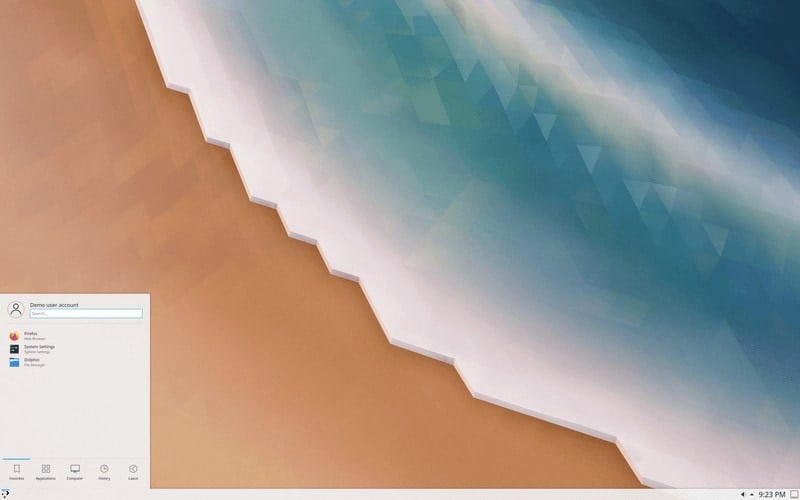
NixOS ist eine weitere unabhängige Linux-Distribution, die 32-Bit-Systeme unterstützt. Der Schwerpunkt liegt auf der Bereitstellung eines zuverlässigen Systems, bei dem Pakete voneinander isoliert sind.
Dies ist möglicherweise nicht direkt auf Durchschnittsbenutzer ausgerichtet, es handelt sich jedoch um eine KDE-basierte, verwendbare Distribution mit einem einzigartigen Ansatz zur Paketverwaltung. Sie können mehr darüber erfahrenFeaturesvon seiner offiziellen Website.
- RAM: 768 MB
- 8 GB Speicherplatz
- Pentium 4 oder gleichwertig
7. Gentoo Linux
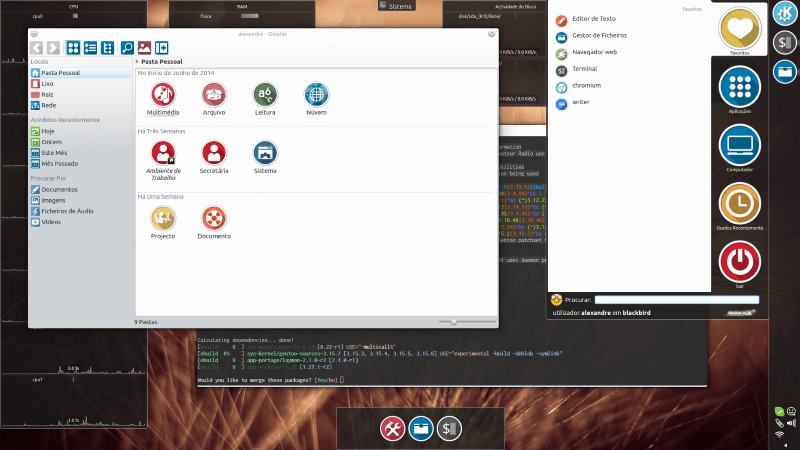
Wenn Sie ein erfahrener Linux-Benutzer sind und nach einer 32-Bit-Linux-Distribution suchen, sollte Gentoo Linux eine gute Wahl sein.
Wenn Sie möchten, können Sie einen Kernel ganz einfach über den Paketmanager mit Gentoo Linux konfigurieren, kompilieren und installieren. Es beschränkt sich nicht nur auf die Konfigurierbarkeit, für die es allgemein bekannt ist, Sie können es auch problemlos auf älterer Hardware ausführen.
Auch wenn Sie kein erfahrener Benutzer sind und es ausprobieren möchten, lesen Sie einfach die Anleitung durchInstallationsanleitungund Sie werden ein Abenteuer erleben.
Minimale Systemvoraussetzungen:
- 256 MB RAM
- Pentium 4 oder AMD-Äquivalent
- 2,5 GB Speicherplatz
8. Devuan
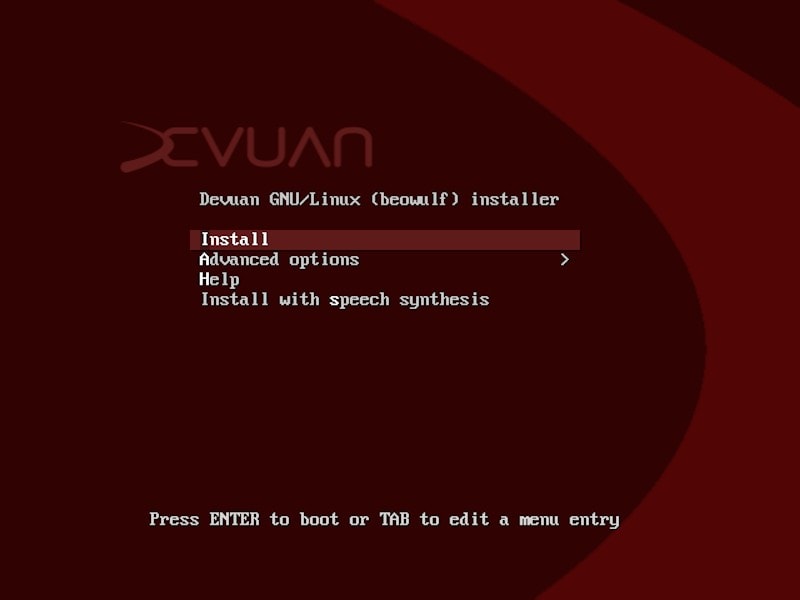
Devuanist eine weitere systemfreie Distribution. Es ist technisch gesehen ein Fork von Debian, nur ohne systemd und ermutigendFreiheit initiieren.
Für einen durchschnittlichen Benutzer ist es vielleicht keine sehr beliebte Linux-Distribution, aber wenn Sie eine systemd-freie Distribution und 32-Bit-Unterstützung wünschen, sollte Devuan eine gute Option sein.
Minimale Systemvoraussetzungen:
- Arbeitsspeicher: 1 GB
- CPU: Pentium 1,0 GHz
9. Linux ungültig machen
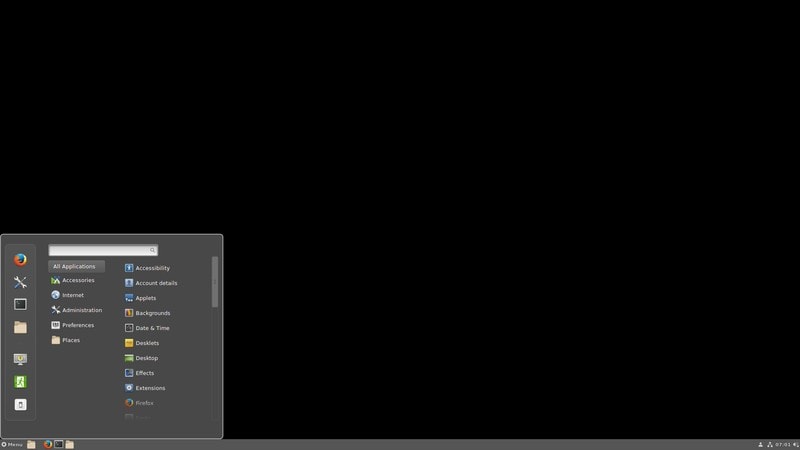
Void Linux ist eine interessante Distribution, die unabhängig von Freiwilligen entwickelt wurde. Ziel ist es, ein Allzweck-Betriebssystem zu sein und gleichzeitig einen stabilen Rolling-Release-Zyklus zu bieten. Es verfügt über runit als Init-System anstelle von systemd und bietet Ihnen die Möglichkeit, mehrere zu wählenDesktop-Umgebungen.
Mit nur 96 MB RAM gepaart mit einem Pentium 4-Chip (oder einem gleichwertigen Chip) verfügt es über eine äußerst beeindruckende Mindestanforderung. Versuch es!
Minimale Systemvoraussetzungen:
- 96 MB RAM
- Pentium 4 oder gleichwertiger AMD-Prozessor
10. Q4OS

Q4OS ist eine weitere Debian-basierte Distribution, die sich auf die Bereitstellung einer minimalen und schnellen Desktop-Benutzererfahrung konzentriert. Es ist auch einer von denenbeste leichte Linux-Distributionenin unserer Liste. Es verfügt über dieTrinity-Desktopfür die 32-Bit-Version und Sie finden KDE Plasma-Unterstützung in der 64-Bit-Version.
Ähnlich wie Void Linux läuft auch Q4OS auf einem Minimum von mindestens 128 MB RAM und einer 300-MHz-CPU mit einem Speicherplatzbedarf von 3 GB. Es sollte für jede Vintage-Hardware mehr als ausreichend sein. Ich würde also sagen, Sie sollten es unbedingt ausprobieren!
Um mehr darüber zu erfahren, können Sie auch hier vorbeischauenunser Testbericht zu Q4OS.
Mindestanforderungen für Q4OS:
- RAM: 128 MB (Trinity Desktop) / 1 GB (Plasma Desktop)
- CPU: 300 MHz (Trinity Desktop) / 1 GHz (Plasma Desktop)
- Speicherplatz: 5 GB (Plasma Desktop) / 3 GB (Trinity Desktop)
11: MX Linux

Wenn Sie eine einigermaßen anständige Konfiguration haben (nicht ganz altmodisch, aber alt), wäre MX Linux meine persönliche Empfehlung für 32-Bit-Systeme. Es ist auch einer von denenbeste Linux-Distributionenfür jeden Benutzertyp.
Im Allgemeinen ist MX Linux eine fantastische, leichte und anpassbare Distribution, die auf Debian basiert. Sie haben die Möglichkeit, zwischen KDE, XFCE oder Fluxbox (einer eigenen Desktop-Umgebung für ältere Hardware) zu wählen. Sie können mehr darüber auf der offiziellen Website erfahren und es ausprobieren.
Minimale Systemvoraussetzungen:
- 1 GB RAM (2 GB empfohlen für eine komfortable Nutzung)
- 15 GB Festplattenspeicher (20 GB empfohlen).
12. Linux Mint Debian Edition
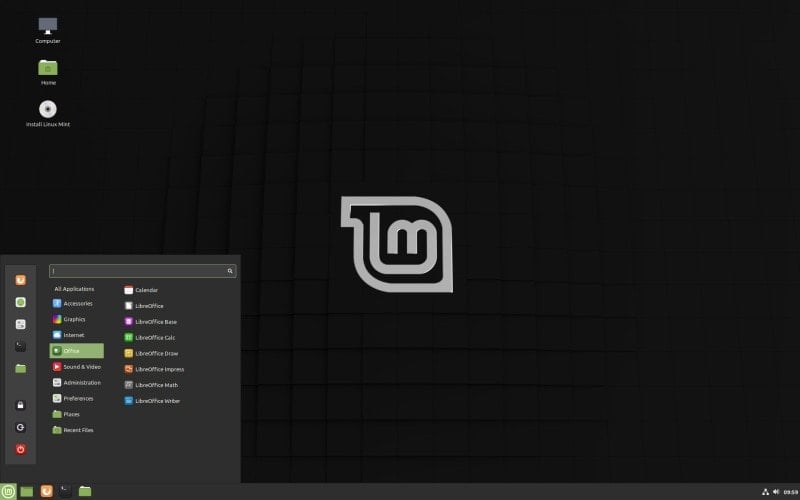
Linux Mint basierend auf Debian? Warum nicht?
Sie erhalten das gleiche Cinnamon-Desktop-Erlebnis, nur ohne Ubuntu als Basis. Es ist genauso einfach zu bedienen und genauso zuverlässig wie Linux Mint auf Basis von Ubuntu.
Sie sind nicht nur auf die Debian-Basis beschränkt, sondern erhalten auch Unterstützung für 64-Bit- und 32-Bit-Systeme. Dies sollte eine gute Wahl sein, wenn Sie keine Linux-Distribution verwenden möchten, die Sie noch nie auf Ihrem 32-Bit-System gehört haben.
Minimale Systemvoraussetzungen:
- 1 GB RAM (2 GB empfohlen für eine komfortable Nutzung)
- 15 GB Festplattenspeicher (20 GB empfohlen).
13. Sparky Linux
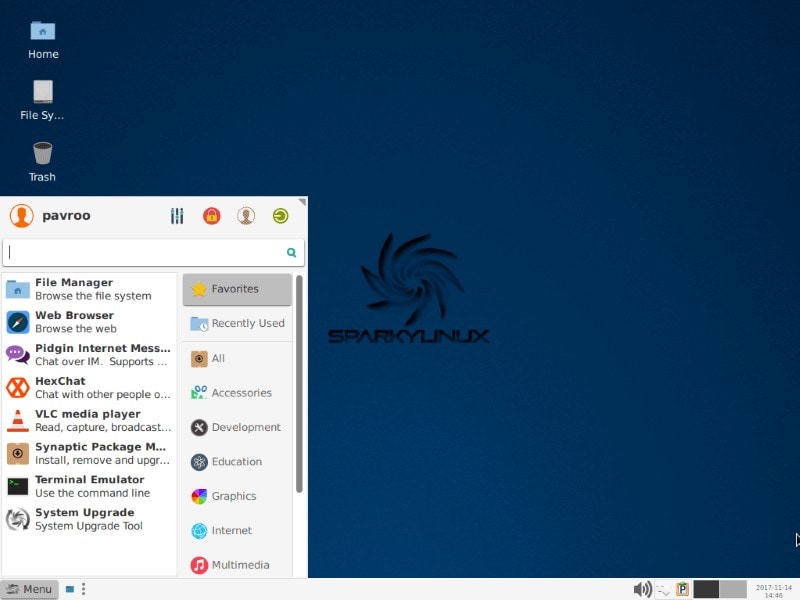
Sparky Linux ist eines davonDie besten leichtgewichtigen Linux-Distributionen, die auf Anfänger zugeschnitten sind. Es ist leicht anpassbar und ressourcenschonend.
Es bietet je nach Ihren Anforderungen verschiedene Editionen, unterstützt jedoch auch 32-Bit-Versionen. Da Sie etwas für Ihren alten Computer möchten, würde ich Ihnen empfehlen, einen Blick auf die MinimalGUI-Edition zu werfen, es sei denn, Sie benötigen wirklich eine vollwertige Desktop-Umgebung wie Xfce oder LXQt.
Minimale Systemvoraussetzungen:
- RAM: 512 MB
- CPU: Pentium 4 oder AMD Athlon
- Speicherplatz: 2 GB (CLI Edition), 10 GB (Home Edition), 20 GB (GameOver Edition)
14. Mageia

Eine GabelMandriva Linux, Mageia Linux ist eine von der Community betriebene Linux-Distribution, die 32-Bit-Systeme unterstützt.
Normalerweise werden Sie jedes Jahr eine Hauptveröffentlichung bemerken. Ihr Ziel ist es, mit ihrer Arbeit dazu beizutragen, ein freies Betriebssystem bereitzustellen, das auch potenziell sicher ist. Es ist möglicherweise keine beliebte Wahl für 32-Bit-Systeme, unterstützt jedoch viele Desktop-Umgebungen (wie KDE Plasma, GNOME). Sie müssen es bei Bedarf lediglich aus den Repositorys installieren.
Sie sollten die Möglichkeit haben, ein für die Desktop-Umgebung spezifisches Image von der offiziellen Website herunterzuladen.
Minimale Systemvoraussetzungen:
- 512 MB RAM (2 GB empfohlen)
- 5 GB Speicherplatz bei minimaler Installation (20 GB bei regulärer Installation)
- CPU: Pentium 4 oder AMD Athlon
Lobende Erwähnungen: Funtoo & Puppy Linux
Funtoo ist eine auf Gentoo basierende, von der Community entwickelte Linux-Distribution. Der Schwerpunkt liegt darauf, Ihnen die beste Leistung mit Gentoo Linux zu bieten, zusammen mit einigen zusätzlichen Paketen, um das Erlebnis für Benutzer zu vervollständigen. Interessant ist auch, dass die Entwicklung tatsächlich vom Schöpfer von Gentoo Linux geleitet wirdDaniel Robbins.
Puppy Linux ist eine kleine Linux-Distribution mit fast keinen gebündelten Softwareanwendungen, aber den grundlegenden Tools. Wenn nichts anderes funktioniert und Sie die leichteste Distribution wünschen, könnte Puppy Linux eine Option sein.
Wenn Sie neu bei Linux sind, werden Sie mit diesen Optionen möglicherweise nicht die besten Erfahrungen machen. Beide Distributionen unterstützen jedoch 32-Bit-Systeme und funktionieren gut mit vielen älteren Intel/AMD-Chipsätzen. Erfahren Sie mehr darüber auf ihren offiziellen Websites.
Zusammenfassung
Ich habe mich bei der Liste auf Debian-basierte und einige unabhängige Distributionen konzentriert. Wenn Ihnen jedoch eine langfristige Unterstützung nichts ausmacht und Sie einfach nur ein 32-Bit-unterstütztes Image in die Hände bekommen möchten, können Sie auch jede auf Ubuntu 18.04 basierende Distribution (oder jede offizielle Version) ausprobieren.
Zum Zeitpunkt des Verfassens dieses Artikels haben sie nur noch ein paar Monate Software-Support übrig. Daher habe ich es vermieden, es als primäre Option zu erwähnen. Wenn Sie jedoch auf Ubuntu 18.04 basierende Distributionen oder eine seiner Varianten mögen, haben Sie Optionen wie:LXLE, Linux Lite, Zorin Lite 15, und andere offizielle Geschmacksrichtungen.
Auch wenn die meisten modernen Desktop-Betriebssysteme auf Basis von Ubuntu die 32-Bit-Unterstützung eingestellt haben. Sie haben immer noch viele Möglichkeiten.
Was würden Sie am liebsten auf Ihrem 32-Bit-System haben? Teilen Sie mir Ihre Meinung in den Kommentaren unten mit.
